Taoistischer Dongyue-Tempel, Peking - Eintrittskarten, Öffnungszeiten, Highlights und Tipps


Der taoistische Dongyue-Tempel (东岳庙) in Pekingist eine historische und kulturell bedeutsame religiöse Stätte, die in der taoistischen Tradition einen herausragenden Platz einnimmt. Mit einer über 600 Jahre alten Geschichte ist der Tempel ein Zeugnis des reichen spirituellen Erbes Chinas.
Der im Chaoyang-Bezirk gelegene Dongyue-Tempel ist bekannt für seine exquisite Architektur und seine ruhige Umgebung. Sein Design verkörpert die traditionelle chinesische Tempelästhetik, mit prächtigen Toren, verzierten Pavillons und wunderschön angelegten Gärten. Der Tempelkomplex erstreckt sich über eine große Fläche mit verschiedenen Hallen, Höfen und Altären, die verschiedenen Gottheiten und taoistischen Glaubensrichtungen gewidmet sind.
Der Dongyue-Tempel hat für Taoisten eine besondere Bedeutung, da er als Hauptsitz der taoistischen Vereinigung von Peking gilt. Gläubige und Besucher strömen in den Tempel, um verschiedenen taoistischen Göttern zu huldigen, Segen zu erbitten und an religiösen Ritualen und Zeremonien teilzunehmen. Die ruhige Atmosphäre des Tempels bietet einen Zufluchtsort für spirituelle Reflexion und Meditation inmitten der hektischen Stadt.
Der Dongyue-Tempel beherbergt in seinen Hallen eine umfangreiche Sammlung taoistischer Kunst, Kalligrafie und religiöser Artefakte. Komplizierte Skulpturen und Gemälde, die die taoistische Mythologie und Legenden darstellen, schmücken die Wände und geben den Besuchern einen Einblick in die reiche Symbolik und Philosophie des Taoismus.
Heute ist der taoistische Dongyue-Tempel weiterhin ein lebendiges kulturelles und religiöses Zentrum, das Einheimische und Touristen gleichermaßen anzieht. Seine historische Bedeutung, seine architektonische Pracht und seine spirituelle Atmosphäre machen ihn zu einem Muss für alle, die die tiefgründigen Traditionen des Taoismus im Herzen Pekings erkunden möchten.
Inhaltsübersicht
- Grundlegende Informationen
- Standort und Transport
- Wer im Tempel verehrt wird
- Geschichte des taoistischen Tempels Dongyue
- Höhepunkte des taoistischen Tempels Dongyue
- Vlog über den taoistischen Tempel Dongyue
- Nützliche Tipps aus Rezensionen zusammengefasst
- Andere Tempel in Peking
Grundlegende Informationen
| Geschätzte Dauer der Tour | 1 - 2 Stunden |
| Ticketpreis | 10 RMB |
| Die Öffnungszeiten | 8.30 - 16.30 |
| Telefon Nummer | 0086-010-65510151 |
Standort und Transport
Der taoistische Dongyue-Tempel befindet sich im Chaoyang-Bezirk, einem belebten Viertel in Peking. Seine genaue Adresse lautet Nr. 141 Chaowai Street, Chaoyang District, Peking, China. Um dorthin zu gelangen, können Sie die folgenden Wege wählen:
Bus: Nehmen Sie die Busse 75, 101, 109, 110, 139 oder 615 und steigen Sie an der Haltestelle Shenlu Street (神路街站) aus, dann stehen Sie direkt vor dem Eingang des Tempels.
U-Bahn: Die nächste U-Bahn-Station zum Dongyue Taoist Tempel ist Dongdajie (东大街) auf der Linie 6. Nachdem du den Bahnhof am Ausgang A verlassen hast, gehst du etwa 600 Meter in Richtung Westen, um den Tempel zu erreichen.
Wer im Tempel verehrt wird
Im taoistischen Dongyue-Tempel wird als Hauptgottheit die taoistische Gottheit Dongyue Dadi verehrt, die auch als der Große Kaiser Dongyue bekannt ist. Dongyue Dadi gilt als die Hauptgottheit des Mount Tai (Dongyue)-Pantheons, einer Gruppe von himmlischen Beamten und irdischen Gottheiten im Taoismus.
Es wird angenommen, dass Dongyue Dadi die Angelegenheiten der Erde regelt und überwacht, einschließlich menschlicher Angelegenheiten, Segen und Schutz. Als Schutzgottheit des Dongyue-Tempels nimmt er eine zentrale Stellung in den religiösen Zeremonien und Ritualen des Tempels ein.
In der Verehrung von Dongyue Dadi werden Tugenden wie Rechtschaffenheit, Gerechtigkeit und Moral betont. Die Verehrer suchen seinen Segen für Wohlstand, Erfolg und Wohlergehen in verschiedenen Aspekten des Lebens, einschließlich Karriere, Gesundheit und Beziehungen.
Geschichte des taoistischen Tempels Dongyue
Der taoistische Dongyue-Tempel wurde ursprünglich während der Yuan-Dynastie im Jahr 1319 unter der Herrschaft von Kaiser Renzong errichtet. Er wurde zu Ehren der taoistischen Gottheit Dongyue Dadi errichtet, von der man glaubte, dass sie die Erde regiert und die menschlichen Angelegenheiten überwacht. Der Standort wurde gewählt, weil man glaubte, dass die östliche Himmelsrichtung, die mit der aufgehenden Sonne und neuen Anfängen assoziiert wird, in der taoistischen Kosmologie vielversprechend ist.
Im Laufe der Jahrhunderte erfuhr der Dongyue-Tempel zahlreiche Erweiterungen und Renovierungen. Während der Ming-Dynastie wurde er weiter ausgebaut und entwickelte sich zu einem wichtigen Zentrum für taoistische Aktivitäten. Viele bedeutende taoistische Priester und Gelehrte waren in dieser Zeit mit dem Tempel verbunden und trugen zu seiner Bedeutung und seinem Einfluss bei.
Während der Qing-Dynastie erlebte der Dongyue-Tempel eine weitere Erweiterungs- und Umbauphase, die zu seiner heutigen Größe und architektonischen Pracht führte. Der Tempelkomplex wurde auf eine große Fläche erweitert und mit kunstvollen Toren, Pavillons, Hallen und Höfen ausgestattet. Der architektonische Stil spiegelt das traditionelle chinesische Tempeldesign wider, das sich durch komplizierte Holzarbeiten, farbenfrohe Malereien und exquisite Handwerkskunst auszeichnet.
Im Laufe seiner Geschichte diente der taoistische Tempel Dongyue als Hauptquartier der taoistischen Vereinigung von Peking, was seine Position als Zentrum für taoistische Aktivitäten und Führung weiter festigte. Er wurde zu einem Ort der Verehrung, des Studiums und der Gemeinschaft für taoistische Praktizierende und zog Anhänger und Gelehrte aus nah und fern an.
In Zeiten des politischen und sozialen Wandels in China, wie der Kulturrevolution im 20. Jahrhundert, war der Dongyue-Tempel wie viele andere religiöse Stätten mit Herausforderungen und Einschränkungen konfrontiert. Mit dem Wiederaufleben der Religionsfreiheit im späten 20. Jahrhundert wurde der Tempel jedoch restauriert und wieder für die Öffentlichkeit zugänglich gemacht, wodurch sein Erbe als bedeutende taoistische Stätte fortbesteht.
Höhepunkte des taoistischen Tempels Dongyue
Architektonische Pracht
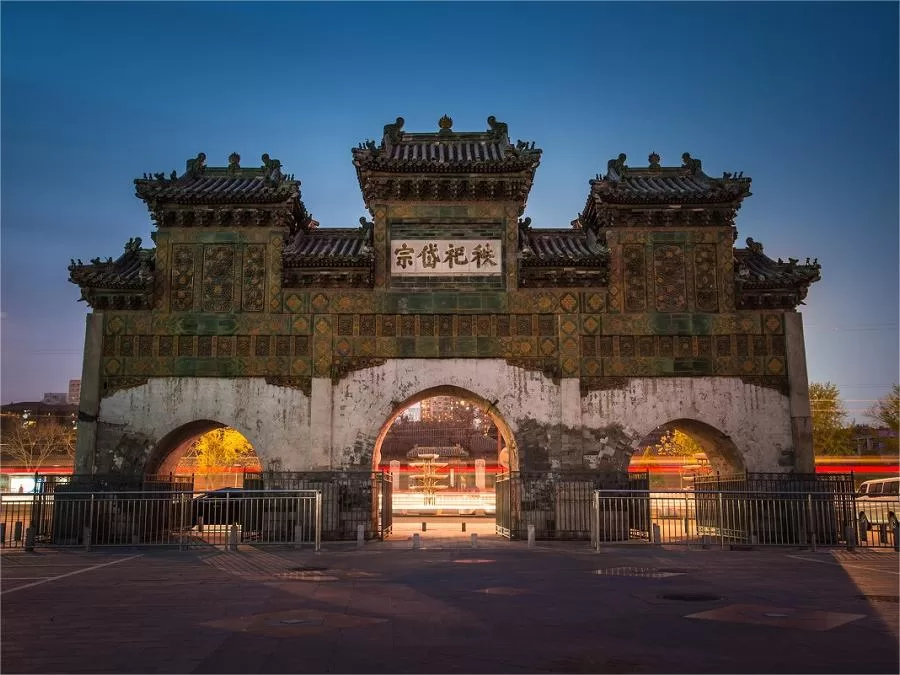
Der Dongyue-Tempelkomplex zeigt große Tore, kunstvoll geschnitzte Steinsäulen und exquisite Hallen, die mit farbenfrohen Gemälden und kunstvollen Holzarbeiten geschmückt sind. Das traditionelle chinesische Tempeldesign, das von den Ming- und Qing-Dynastien beeinflusst wurde, spiegelt die Handwerkskunst und die Liebe zum Detail dieser Epoche wider. Die Schönheit des Tempels liegt in der harmonischen Mischung der architektonischen Elemente, die eine ruhige und visuell beeindruckende Atmosphäre schaffen. Der Dongyue-Tempel ist ein Zeugnis des reichen architektonischen Erbes Chinas und zieht die Besucher mit seiner zeitlosen Pracht in seinen Bann.
Heilige Altäre und Säle
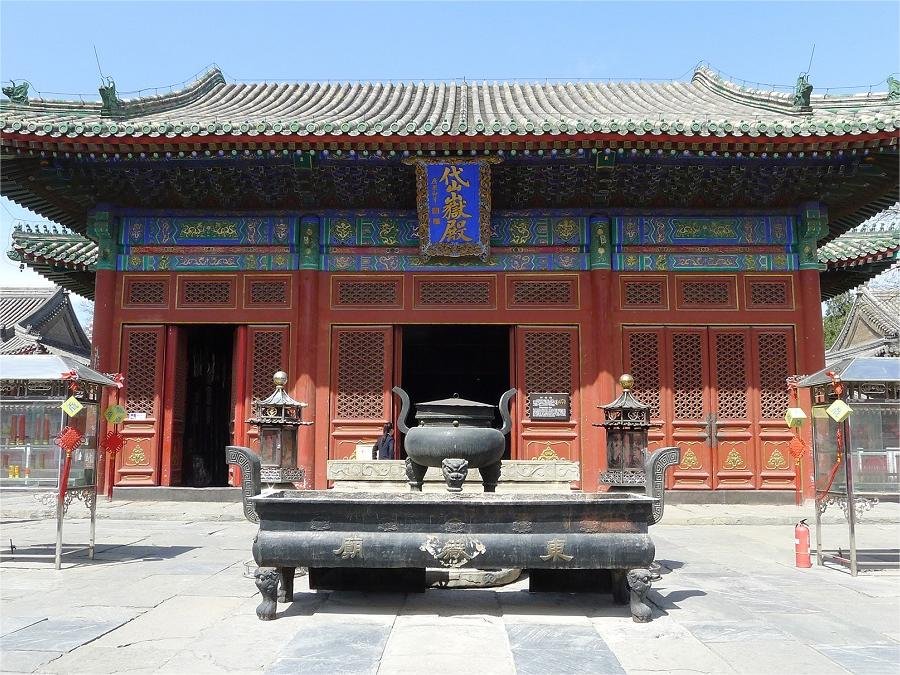
Der taoistische Dongyue-Tempel in Peking beherbergt eine Reihe von heiligen Altären und Hallen, die den Besucher durch ihre spirituelle Bedeutung in ihren Bann ziehen. Jede Halle ist bestimmten taoistischen Gottheiten und Geistern gewidmet und mit kunstvollen Skulpturen, Statuen und lebendigen Gemälden ausgestattet, die die taoistische Mythologie und das Pantheon darstellen. Die Atmosphäre ist von Ehrfurcht und Hingabe geprägt, wenn die Gläubigen diesen verehrten Gestalten ihre Aufwartung machen und ihren Segen erbitten. Die komplizierten Details und künstlerischen Darstellungen in den Altären und Hallen bieten einen Einblick in die reichen taoistischen Traditionen und Glaubensvorstellungen und laden die Besucher ein, in das spirituelle Erbe Chinas einzutauchen.
Yuelao-Schrein

Der Yuelao-Schrein im taoistischen Dongyue-Tempel ist ein Ort, der der taoistischen Gottheit Yuelao gewidmet ist, die auch als Gott der Ehe und der Eheschließung bekannt ist. Dieser Schrein zieht Besucher an, die den Segen für Liebe, Beziehungen und erfolgreiche Ehen suchen. Geschmückt mit Opfergaben, Gebetstafeln und roten Bändern, die Liebe und Verbindung symbolisieren, schafft der Yuelao-Schrein eine Atmosphäre der Romantik und Hoffnung. Die Gläubigen kommen, um Yuelao um Rat und Hilfe in Herzensangelegenheiten zu bitten, da sie an seine Fähigkeit glauben, harmonische Ehen zu schließen.
Vlog über den taoistischen Tempel Dongyue
Nützliche Tipps aus Rezensionen zusammengefasst
Das kupferne Maultier berühren: Einer der Höhepunkte des Tempels ist die Statue des kupfernen Maultiers, das der Legende nach das Reittier von Wen Chang, dem Gott der Literatur, ist. Die Legende besagt, dass die Berührung der Statue Krankheiten heilen und Glück bringen kann. Die Teilnahme an dieser Tradition, die als "Berühren des Kupfer-Maultiers im Dongyue-Tempel" bekannt ist, ist bei den Einheimischen eine beliebte Volksaktivität.
Die sechsundsiebzig Abteilungen: Wenn Sie den Tempelhof betreten, sehen Sie zwei seitliche Korridore mit sechsundsiebzig Abteilungen auf jeder Seite. Jeder Abteilung steht eine Gottheit vor, die für die Beurteilung von Gut und Böse zuständig ist. Die Statuen in jeder Abteilung stellen verschiedene Szenen aus der Unterwelt dar. Bei der Betrachtung dieser Statuen ist es wichtig, keine Gebete oder Anbetung zu verrichten.
Der Steinwald: Angrenzend an die Haupthalle befinden sich zwei Steinwälder, einer im Osten und einer im Westen. Im östlichen Steinwald befindet sich ein bedeutendes Denkmal, die "Daoxing-Stele", die durch eine Glasabdeckung geschützt ist. Diese Stele, die von dem berühmten Kalligraphen Zhao Mengfu geschrieben wurde, ist ein Schatz des Tempels. Obwohl viele steinerne Denkmäler während der Kulturrevolution zerstört wurden, weisen die verbliebenen sichtbare Zeichen der Beschädigung und Reparatur auf und geben einen Einblick in die bewegte Geschichte des Tempels.
Andere Tempel in Peking

Hongluo-Tempel - ein Tempel, der mit einer atemberaubenden natürlichen Umgebung gesegnet ist

Wofo-Tempel - ein Tempel mit einer Statue eines liegenden Buddhas
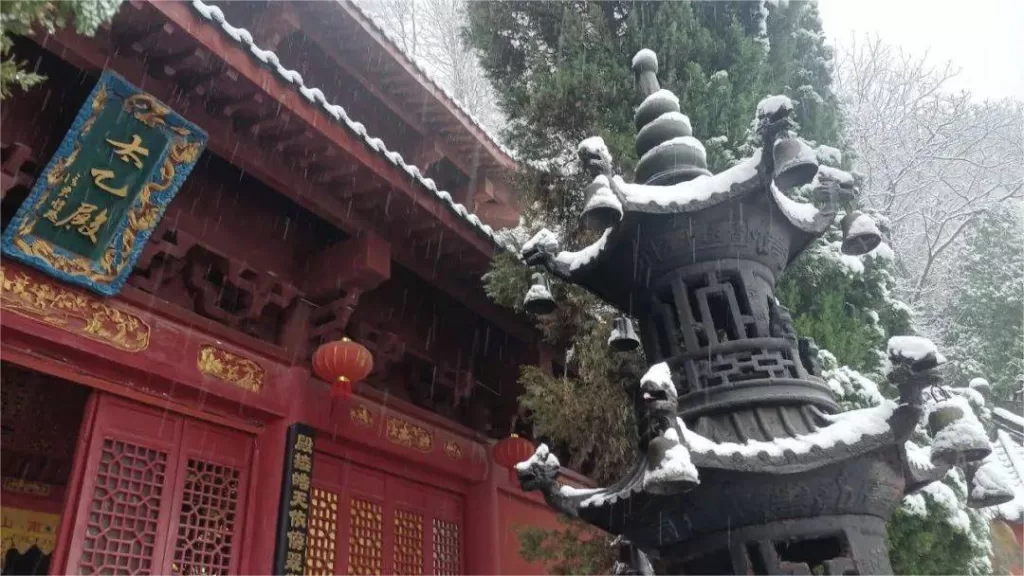
Tempel der weißen Wolke - ein taoistischer Tempel aus der Tang-Dynastie
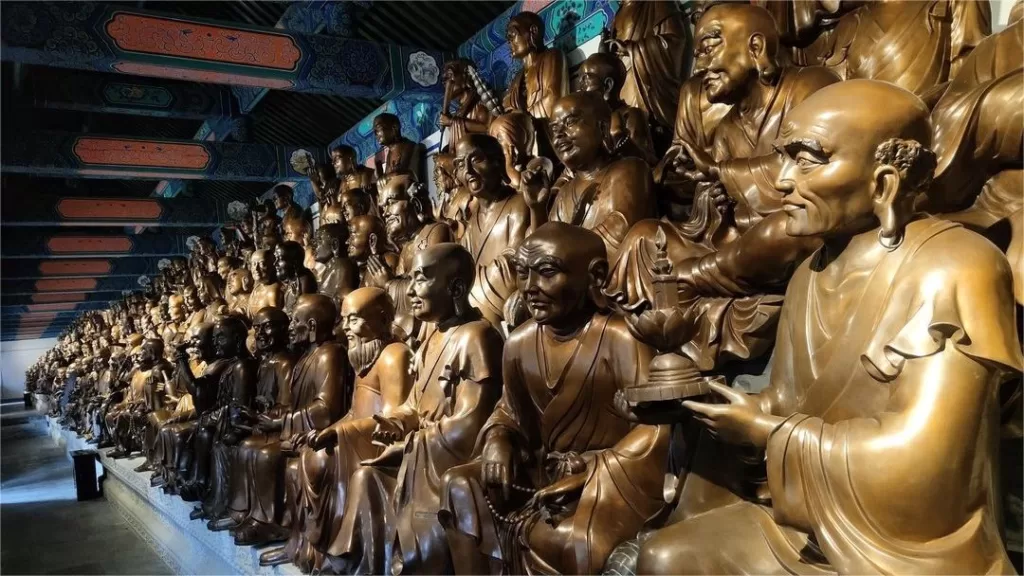
Jietai-Tempel - ein Tempel am Fuße des Jietai-Bergs

Yonghe-Lama-Tempel - ein tibetisch-buddhistischer Tempel
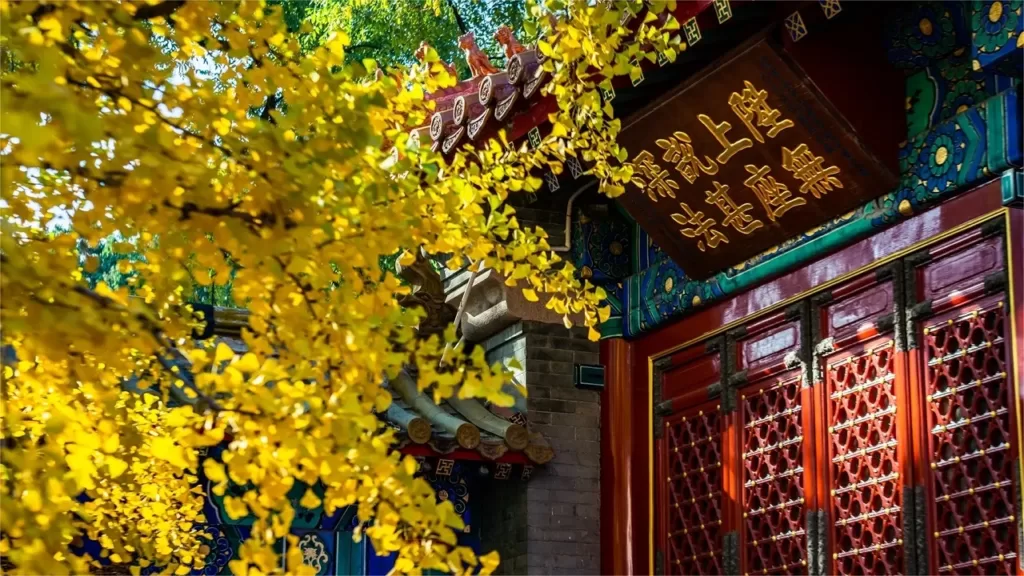
Badachu-Park - eine Ansammlung von acht Tempeln